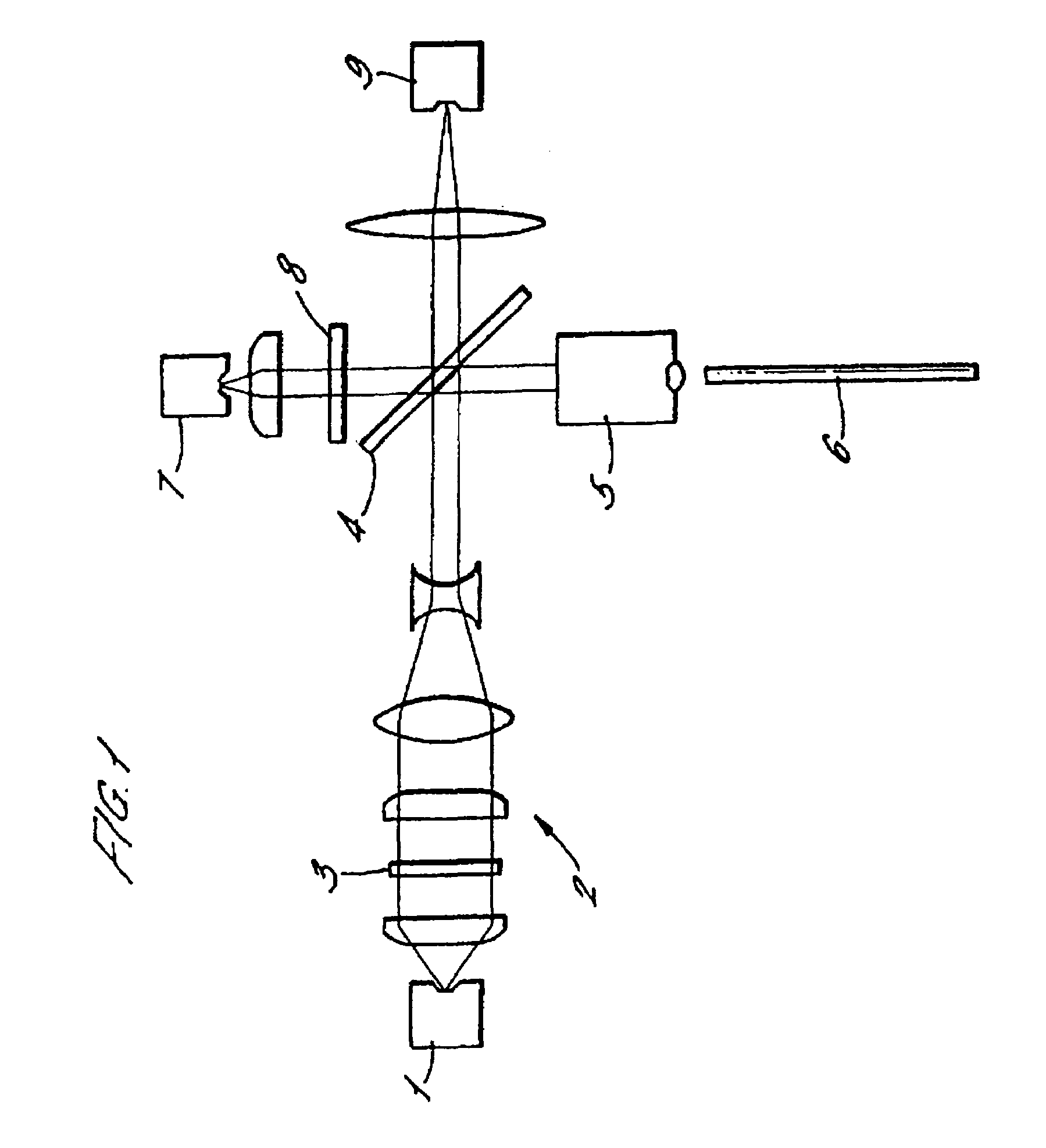Optical sensor containing particles for in situ measurement of analytes
an in situ measurement and optical sensor technology, applied in the field of optical sensor containing particles for in situ measurement of analytes, can solve the problems of increasing the frequency of blood glucose testing imposing a considerable burden on the diabetic patient, devices not suitable for human use, and devices of this type have not gained approval for use in patients
- Summary
- Abstract
- Description
- Claims
- Application Information
AI Technical Summary
Problems solved by technology
Method used
Image
Examples
example 1
[0074]A glucose assay according to Meadows and Schultz (Talanta, 35, 145–150, 1988) was developed using concanavalin A-rhodamine and dextran-FITC (both from Molecular Probes Inc., Oregan, USA). The principle of the assay is fluorescence resonance energy transfer between the two fluorophores when they are in close proximity; in the presence of glucose the resonance energy transfer is inhibited and the fluorescent signal from FITC (fluorescein) increases. Thus increasing fluorescence correlates with increasing glucose. The glucose assay was found to respond to glucose, as reported by Schultz, with approximately 50 percent recovery of the fluorescein fluorescence signal at 20 mg / dL glucose. Fluorescence was measured in a Perkin Elmer fluorimeter, adapted for flow-through measurement using a sipping device.
example 2
[0075]The sensor particles are produced by combining concanavalin A-rhodamine and dextran-FITC with polymer and solvent to form a droplet. The solvent is removed, and the droplets are collected, dried and filtered to give a dry, free-flowing powder.
[0076]The sensor particles are combined with biodegradable material in an injectable formulation to form the sensor.
example 3
[0077]Malachite Green (MG)-Dextran is prepared using the method described in Joseph R. Lakowicz et al., Analytica Chimica Acta, 271 (1993) 155–164. Amino dextran (10 000 MW) is dissolved in pH 9.0 bicarbonate buffer and reacted with an 10-fold excess of MG-isothiocyanate for 4 h at room temperature. The labelled dextran is freed from excess fluorophore on a Sephadex G-50 column.
[0078]Cascade Blue Concanavalin A (Cascade Blue-Con A) is obtained from Sigma.
[0079]The sensor particles are produced by combining Cascade Blue-Concanavalin A and Malachite Green-Dextran with polymer and solvent to form a droplet. The solvent is removed, and the droplets are collected, dried and filtered to give a dry, free-flowing powder.
[0080]The sensor particles are combined with biodegradable material in an injectable formulation to form the sensor.
PUM
| Property | Measurement | Unit |
|---|---|---|
| pH | aaaaa | aaaaa |
| diameter | aaaaa | aaaaa |
| diameter | aaaaa | aaaaa |
Abstract
Description
Claims
Application Information
 Login to View More
Login to View More - R&D
- Intellectual Property
- Life Sciences
- Materials
- Tech Scout
- Unparalleled Data Quality
- Higher Quality Content
- 60% Fewer Hallucinations
Browse by: Latest US Patents, China's latest patents, Technical Efficacy Thesaurus, Application Domain, Technology Topic, Popular Technical Reports.
© 2025 PatSnap. All rights reserved.Legal|Privacy policy|Modern Slavery Act Transparency Statement|Sitemap|About US| Contact US: help@patsnap.com



